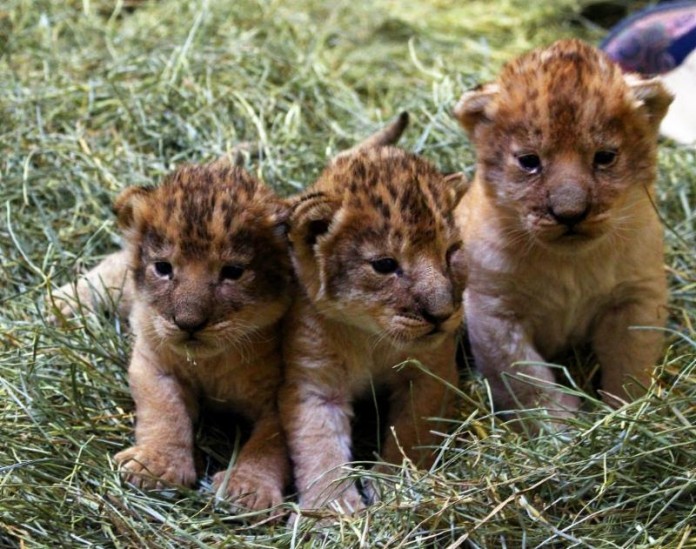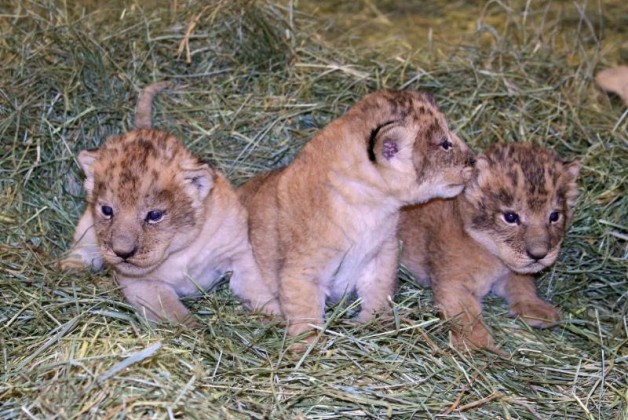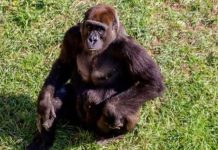
SALT LAKE CITY, Utah, March 9, 2016 (Gephardt Daily) — A trio of lion cubs has joined the Hogle Zoo animal family, it was announced Wednesday.
The cubs and mom Nobu are doing well.
“There is always some anxiety because you’ll never know what kind of mom they’ll be,” said Valerie Schubert, primary lion keeper.
“But Nobu is a wonderful first-time mother. She is extremely affectionate and protective of her cubs…. She immediately started cleaning them and they started nursing right away.”
The 2014 opening of African Savanna saw the arrival of four lions to Hogle Zoo: brothers, Baron and Vulcan, and sisters Nobu and Sela, according to a statement from the zoo.
Once the girls were big enough, they were carefully introduced to the males and they got along great. Fast forward a few months and the zoo is happy to announce three cubs born to Nobu and Baron on Feb. 24.
After the typical 110-day gestation, Nobu went into labor without much warning, and delivered all three cubs within six hours, “which is pretty quick,” said Schubert.
Each cub weighed roughly two pounds at birth.
The lion cub birth is the first in 27 years and only the third in the zoo’s 85-year history.
“After a 10 year absence, it’s great to have African lions back in the zoo and doing so well in their new home at African Savanna,” said Craig Dinsmore, zoo executive director.
“Now to have our first cubs born here in over twenty years is just wonderful and with lions in Africa facing greater and greater peril, this birth is important.”
For now, the cubs are sticking close to mom and they’ll be bonding for the next several weeks.
Zoo spokeswoman Erica Hansen said the keepers are also working on the nuances of introducing “auntie” Sela to the cubs.
“Once they’re all together, they’ll need to introduce them to the boys ─ Baron, their father, and ‘uncle’ Vulcan,” she said.
“This process takes several weeks of careful observation and attention by keepers and animal care staff. Eventually, guests will be able to visit the full pride later this spring.”








